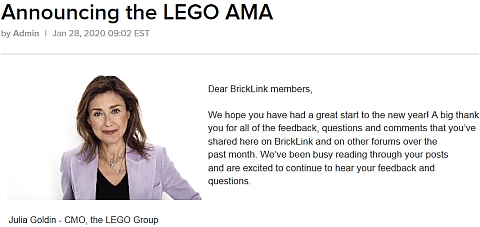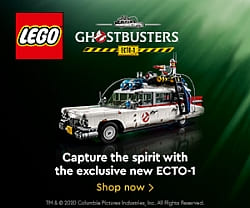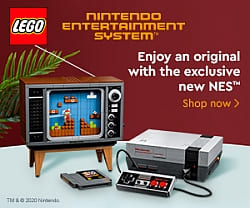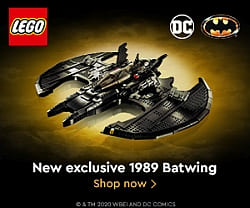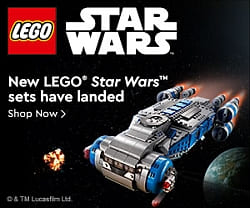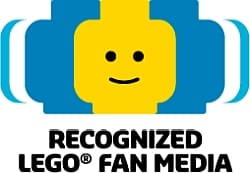A couple of days ago, LEGO announced a new theme called LEGO DOTS. The theme is basically a new arts and crafts building concept, all about creating patterns and mosaics using small LEGO tiles and decorated elements. Below is the press-release, with all the information, pictures, and an interesting introductory video by the designers. Check it out, and let’s discuss!
CAMILLE WALALA INSTALLATION TEASES NEW LEGO ARTS AND CRAFTS BUILDING CONCEPT
Designer unveils ‘HOUSE OF DOTS’ – a five-room interactive house with an 8ft slide built with the help of 180 children and a group of passionate LEGO adult fans – to introduce new LEGO DOTS
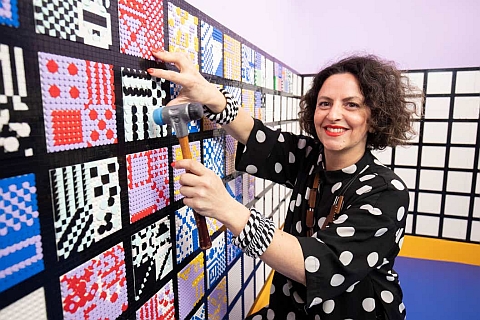
London, January 27, 2020: Artist Camille Walala today unveiled her most interactive work to date at Coal Drops Yard in London’s Kings Cross to introduce the entirely new 2D tile play concept from the LEGO Group – LEGO DOTS.
Born in France, based in East London, and working worldwide, Camille Walala is an artist who takes joy seriously. Known for ambitious and large-scale interventions in public spaces from Mayfair to Mauritius, she uses the man-made landscape as a platform for disseminating positivity. Her work encompasses full-facade murals, immersive 3D installations, street art, interiors, and set design – characterized by a fusion of bold colors and playful geometric patterns. Camille finds inspiration in community and collaboration, and the power or color and pattern to transform atmospheres, elevate moods and spark positivity.
To tease the new product, Walala was invited to bring LEGO DOTS to life in a free public art installation that celebrates their shared values of creativity, self-expression and accessibility, expressed through the vibrant colors and bold geometric patterns of both the new product and her own signature work.
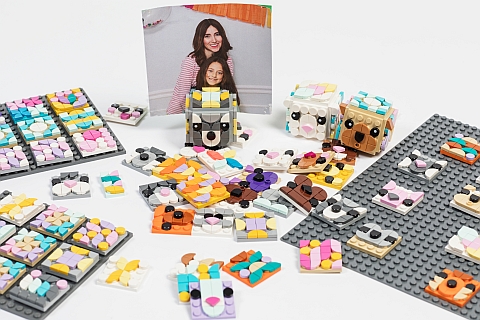
The result is HOUSE OF DOTS: a fantastical house comprising five rooms spread over eight shipping containers, in which everything from the walls and floors to the rugs, frames, and furniture has been customized in a mashup of LEGO DOTS and Walala’s distinctive patterns and colors.
Playful and immersive, HOUSE OF DOTS invites people to journey through a living room, kitchen, bedroom, bathroom and finally a unique DOTS DISCO room designed to celebrate self-expression and let the body flow freely with DOTS disco moves to a custom playlist from Ele Beattie. While they explore the space, guests are encouraged to get involved by designing their own patterns and bracelets – and even take elements away with them ahead of the release of LEGO DOTS in March 2020. If that weren’t enough, guests can exit via an 8ft slide down the side of the installation.
Camille Walala, artist, says: “It’s a joy to create a fun space where kids and adults can spontaneously express their creativity, make something beautiful and show off who they are. HOUSE OF DOTS captures all the exuberance and playfulness that people know me for, with something extra special: the chance to let your imagination go wild and create your own work of art. Oh, and a slide.”

LEGO DOTS taps into the arts and crafts space by using a 2D tile-based play concept that offers children a creative canvas for self-expression. Based on multiple shapes and colorful tiles, it is supported by an exciting portfolio that ranges from wearables to room décor with surfaces designed for individual customization and self-expression. To excite young creatives even more, over thirty mood tiles are also being introduced, including facial expressions, music note, cosmic planet, star night, paw prints, and a rainbow pooh – and many more.
Being based on the LEGO System in Play, there are limitless ways children can DOT their world, taking all elements apart and redesigning again to help build their creative flair and confidence.
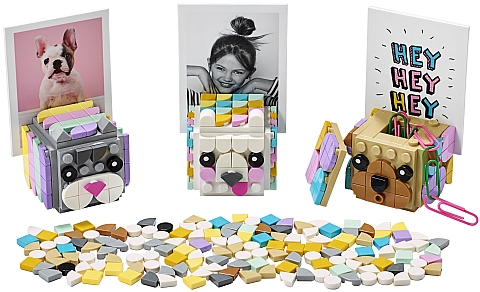
Lena Dixen, Senior Vice President and Head of Product and Marketing Development at the LEGO Group, says about the collaboration with Camille Walala: “We’re extremely excited to introduce LEGO DOTS as a new arts and crafts building concept giving children a creative canvas for social, self-expressive play with endless, ever-changing patterns, colors and designs. As someone who epitomizes how confidence in your creativity can have a tremendous impact, Camille was perfect to collaborate with to announce it to the world. She has created something extraordinary and immensely fun that we can’t wait for our fans to explore and be inspired by.”

When creating LEGO DOTS, LEGO designers were inspired by internal research showing that kids are increasingly looking to shape their creative confidence through more personalized forms of play where they can explore freely and express themselves through their own designs. This particular insight draws on a quantitative study conducted with 10,800 parents and 7,200 children across the US, China, and Germany, and among the participants a total of 21,600 play observations were mapped out and used to identify the relevance and concept direction of DOTS.
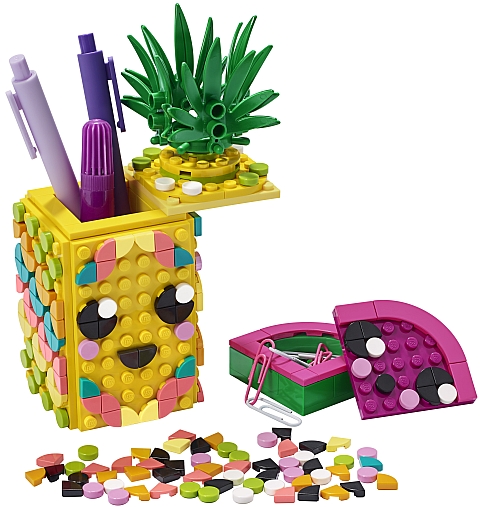
The specific DOTS product development phase has since been further informed by monthly hands-on play sessions, biannual focus groups and quantitative tests across US, UK, Germany, and Denmark with more than 500 parents and kids over two years, ensuring the design development aligns to consumer input. Fans excited about this new play concept will be pleased to hear that more 2D tile-based LEGO products are in the pipeline.
HOUSE OF DOTS will remain at Coal Drops Yard January 28 – February 2 and can be visited by the public through sign-up here: HouseOfDots. Kids under 18 years of age must be accompanied by an adult.
The new LEGO DOTS range available from March 1st, 2020 will include the following products, each of them full of LEGO tiles in beautiful colors, and even printed tiles, and decorative pieces! All the products in the first wave of sets are already listed at the LEGO DOTS section of the Online LEGO Shop,
Wearables:
- Rainbow Bracelet (RRP from: £ 4,99 / $ 4,99 / € 5,99)
- Funky Animals Bracelet (RRP from: £ 4,99 / $ 4,99 / € 5,99)
- Dark Unicorn Bracelet (RRP from: £ 4,99 / $ 4,99 / € 5,99)
- Cosmic Bracelet (RRP from: £ 4,99 / $ 4,99 / € 5,99)
- Tropical Birds Bracelet (RRP from: £ 4,99 / $ 4,99 / € 5,99)
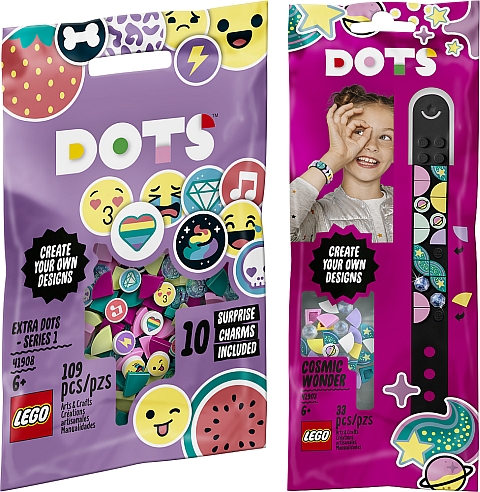
Room Décor:
- Photo cubes – 3 animal cubes for picture displays (RRP: £ 12.99 / $ 14,99 / € 14,99)
- Jewelry holder for e.g. rings, necklaces, bracelets (RRP: £ 12.99 / $ 14,99 / € 14,99)
- Pineapple pencil holder (RRP: £ 17.99 / $ 19,99 / € 19,99)
- Mini picture frame (not available in Western Europe) (RRP: $ 3,99)
Booster Bags:
- Bags with raw colored and decorated tiles (RRP: £ 3,99 / $ 3,99/ € 3,99)


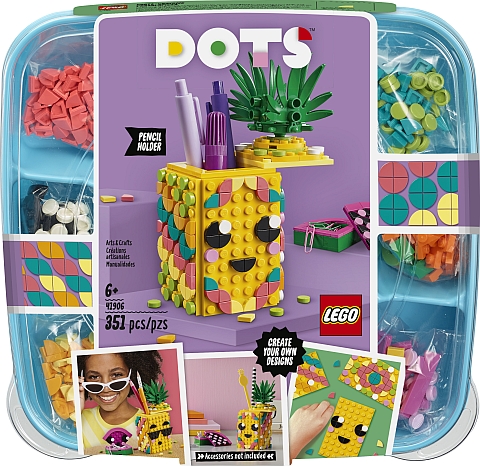
HOUSE OF DOTS Fun Facts:
- 2 million LEGO tiles used to dot the installation
- 800 man-hours required to dot the installation
- 150 square meters of DOTS structure inside the installation
- 180 creative children from Kings Cross Academy helped create bespoke wall installation for Camille Walala’s DOTS kitchen design
- Eight passionate AFOLs (Adult Fans of LEGO building) helped dot the +150 square meters of Camille Walala’s detailed interior design including everything from rugs, artwork on the walls to plant pots and kitchen elements.
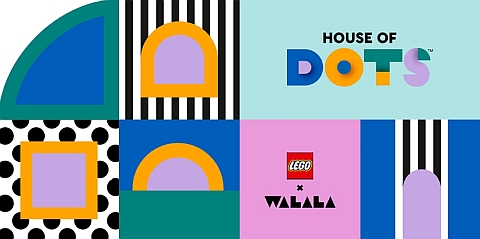
What do you think? How do you like the idea of LEGO DOTS? Is this a theme and building style you would be interested in? Are you planning to get any of the sets? Feel free to share your thoughts and discuss in the comment section below!
And you might also like to check out the following related posts:


